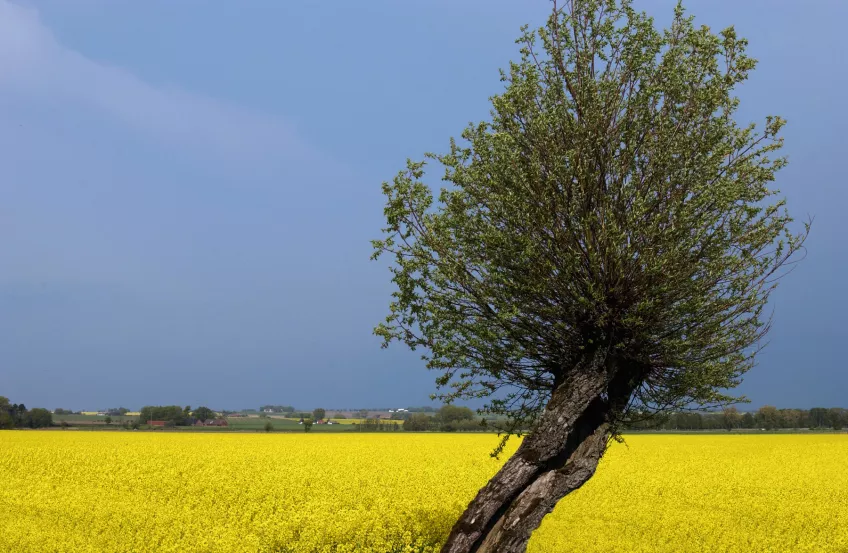Biological Monitoring BIOR39
15 credits
The main objective of this course is that you learn to optimise time in the field in order to obtain maximum information about the conditions and status of the natural environment. Monitoring of nature is based on that the investigator knows what change is expected and can construct a programme, including collection of data and material, which can detect a particular change. You may also do a general documentation of the area/environment nature if you don’t know the expected change. In this course, general methods in monitoring programmes and documentations are treated in lectures, seminars and excursions.
Excursions
During the course a substantial amount of time is spent in the field. The main area of excursions is Kulturens Östarp, where you will gather different “layers” of monitoring data and knowledge. These different layers that you collect during the course are then used in the end of the course for a Project work (see below). We will also have day-, evening/night- and morning excursions, but no overnight stays. During the field work you will learn e.g. how to interpret aerial photos, measure tree and bush layers, and how to use GIS as an instrument for conducting monitoring schemes. During the two evening/night excursion we look at bats (if the weather allows for it) and determine the demand of habitats for frogs in small ponds. In an early morning excursion you will learn methods for making an inventory of birds. You will also visit different types of vegetation and learn to classify these according to different vegetation classification systems.
Field exercise
At Kulturens Östarp you will carry out fixed field exercises in small groups, with the aim of learning how to start a monitoring scheme. In this exercise you will both collect new data but also use data collected by students during previous years in order to analyse changes in the flora or fauna at Kulturens Östarp. At the end you will present your study in a seminar, with opposition and defence.
Examination 1 (written exam)
Halfway through the course there will be a written exam covering the theoretical parts of the course.
Examination 2 (project work)
In the end of the course you will use all the data collected at Kulturens Östarp in order to make an evaluation of the different nature values at the sites. This evaluation is then the basis for the writing of an imaginative monitoring plan for the area given different future scenarios.
And then…
If you want to work in a municipality or county administrative board this is a course for you. In combination with Nature Conservation (BIOC05) and Conservation Biology (BIOR83) you will have an excellent base for working with nature conservation problems. Other good complementary courses are GIS courses, courses in floristics and faunistics, and Mosses, Lichens, Fungi – Biodiversity and Conservation (BIOR11).
Spring period 2
Full-time, on campus, in English
Application
Course literature, 2024
Handbook of Biodiversity Methods (2006), Hill, Fasham, Tucker, Shewry and Shaw, Cambridge Univ Press, ISBN-978-0521-82368-5
Schedule
The latest schedule for the course Biological Monitoring in the schedule software TimeEdit.
Evaluation
You will find the latest evaluation on our web page with course evaluations.
Questions?
Lotta Persmark, Study advisor, biology and bioinformatics
Telephone: +46 46 222 37 28
Email: Lotta [dot] Persmark [at] biol [dot] lu [dot] se (Lotta[dot]Persmark[at]biol[dot]lu[dot]se)


